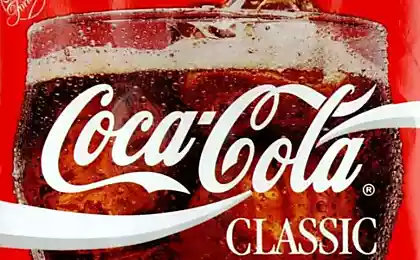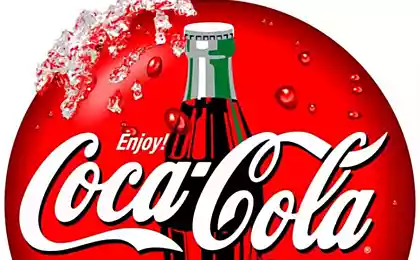171
What do Coca Cola and Nazi Germany have in common?
The dark side of propaganda and marketing

Human history is full of paradoxes, but few people think that there is something in common between the refreshing drink of Coca-Cola and the propaganda machine of the Third Reich. This connection is not accidental – it is rooted in the revolutionary ideas of one man who forever changed our understanding of human psychology and how to influence mass consciousness.
Edward Berenice, nephew of the famous psychoanalyst Sigmund Freud, became the architect of modern propaganda and the creator of what we today call “public relations.” His methods were so effective that they were used by both American corporations to sell goods and Nazi ideologues to promote their destructive ideas.
Edward Berenice: The man who taught the world to manipulate
Edward Berenice was born in 1891 into a family where psychoanalysis was not just a science but a way of life. His uncle Sigmund Freud discovered the unconscious, and Berenjs himself decided to use this knowledge for practical purposes. In 1928, he wrote Propaganda, which became a handbook not only for marketers but also for politicians around the world.
Berenice understood that people make decisions not on the basis of logic, but under the influence of emotions and subconscious desires. He pioneered the use of psychoanalytic methods for commercial purposes, creating the foundations of modern marketing and PR.
One of the most striking examples of his work was a campaign to promote smoking among women. In 1929, Berenice organized the Torch of Freedom parade in New York City, where a group of women defiantly smoked cigarettes as a symbol of emancipation. This action forever changed the attitude of society to women’s smoking and brought tobacco companies billions of dollars in profits.
Coca-Cola: The drink that sold the American dream

Coca-Cola was one of the first customers of Berenice and his followers. Instead of simply advertising the taste of the drink, marketers began selling emotions, associations, and lifestyles. Coca-Cola has become a symbol of happiness, youth, friendship and the American dream.
Coca-Cola’s advertising campaigns masterfully used the principles of psychological impact. They created associations between the drink and positive emotions using bright colors, happy faces and music that evoked feelings of joy and togetherness. The slogan "Coca-Cola is the real thing!" was not accidental - it appealed to a basic human need for authenticity and belonging.
Psychological trick: Coca-Cola used the principle of "anchoring" - creating stable associations between a product and positive emotions. Every time a person saw the color red or heard the characteristic sound of a bottle opening, pleasant memories were automatically activated in his mind.
Nazi propaganda: The Dark Mirror of Marketing
Joseph Goebbels, Minister of Propaganda of the Third Reich, carefully studied Berenice’s work and the American experience of mass influence. The Nazis adapted marketing techniques for their ideological purposes, creating one of the most effective propaganda machines in history.
It is important to understand that the methods themselves are neutral, but their application can be both creative and destructive. The techniques Coca-Cola used to sell beverages were used by the Nazis to spread hatred and prepare for war.
Nazi propaganda used the same principles: emotional influence instead of logical arguments, the creation of vivid visual images, the repetition of simple slogans, appeal to the basic instincts of fear and pride. Mass rallies, torch marches, uniforms – all this created a sense of belonging to something great and significant.
General impact mechanisms
Both Coca-Cola and Nazi propaganda used the same psychological mechanisms. They created emotional associations, used repetition to anchor messages, appealed to a sense of belonging, and created a sense of exclusivity in their audience.

Contemporary lessons: How to Protect Yourself from Manipulation
Understanding the mechanisms of psychological influence should not cause paranoia, but should make us more conscious consumers of information. In the age of social media and digital marketing, these techniques have become even more sophisticated and personalized.
Practical recommendations for protection against manipulation:
Develop critical thinking: Always ask yourself, “Who benefits from me thinking or doing that?” Analyze the motives of those who are trying to convince you.
Check the sources of information: Check who is behind an advertisement, article or social media post. Look for independent sources and alternative perspectives.
Slow down decision-making: Manipulative techniques often put pressure on emotions and require quick decisions. Give yourself time to think, especially when making important purchases or choices.
Recognize your emotional triggers: Understand what you are reacting to most strongly – fear, anger, desire to belong to a group – and be especially careful in such situations.
Learn the psychology of influence: The more you know about persuasion techniques, the harder it is to fool you. Read the work of Robert Cialdini, Daniel Kahneman and other researchers.
Ethical Principles in Marketing and Communication
Understanding the power of psychological influence imposes responsibility on those who use this knowledge. Modern marketers, politicians, and public figures must be guided by ethical principles, using their skills to create, not to destroy.
“With great power comes great responsibility. Knowing the mechanisms of the human psyche gives us the ability to both help people make better decisions and manipulate them for selfish purposes. ?
2025: Same tricks, new media.
Nearly a century after the publication of Berenice's work, his methods have not only not become obsolete, but have reached unprecedented sophistication. In 2025, marketers are using the same psychological principles as their predecessors in the 1920s, but now they have much more powerful tools.
Social media algorithms analyze millions of data about each user: what you like, how much time you spend watching content, what time of day are most active. This information allows you to create personalized ads that impact your specific emotional triggers with surgical precision.
TikTok, Instagram, YouTube – modern platforms have become new battlegrounds for your attention and wallet. Influencers sell not only products but also lifestyles using the same emotional anchoring techniques as Coca-Cola adverts a century ago. The only difference is that now these messages come not through the radio or TV, but through the screen of the smartphone, which is always with you.
Fact of 2025: The average social media user sees more than 5,000 ads per day. Most use techniques developed by Berenice: creating artificial urgency, social proof, emotional triggers, and subconscious associations.
Neuromarketing, eye-tracking, big data analysis – modern technologies allow you to study consumer reactions at a level that Berenice could only imagine in his wildest dreams. Companies know what colors make you buy, what words are trustworthy, and even how in-store music affects the size of your purchase.
Critical thinking as the only defense
The story of Edward Berenice, the success of Coca-Cola, and the tragedy of Nazi propaganda show us that psychological techniques are a double-edged sword. They can serve both to create value and improve people’s lives, and to manipulate and cause harm. The main finding is that these methods have not disappeared with the development of technology – they have only improved.
The main conclusion: In a world where every click is tracked, every emotion analyzed, and every desire monetized, critical thinking becomes not just a useful skill, but a matter of survival. This is the only reliable defense against increasingly sophisticated attempts to manipulate our consciousness.
Developing critical thinking is not paranoia, it is essential literacy for twenty-first-century life. Just as we learn to read and write, we must learn to recognize attempts at psychological influence and protect our ability to make independent, informed decisions.
The future belongs to those who can find a balance between harnessing the power of modern technology and preserving their own autonomy of thought. Understanding the mechanisms of influence should not make us cynical, but should make us wise. Knowing the history of Berenice and his followers is key to understanding the present and protecting against future attempts to manipulate human consciousness.
Glossary
Promotion
Systematic dissemination of information in order to form a certain opinion or behavior in the target audience.
Psychoanalysis
The method of psychotherapy and the theory of personality developed by Sigmund Freud, which studies the unconscious processes of the psyche.
Emotional anchoring
A psychological mechanism for creating stable associations between certain stimuli and emotional responses.
Critical thinking
Ability to analyze information, identify logical errors, and make informed decisions based on facts and evidence.
Manipulation
Hidden psychological influence on a person in order to force certain actions against his will or interests.
Public relations (PR)
To create and maintain a positive image of the organization or person in the eyes of the public.
Cognitive distortions
Systematic errors in thinking that affect decision-making and judgment.
Mass consciousness
A set of ideas, opinions and sentiments shared by large groups of people in a particular historical period.
Iodine and thyroid gland: how to take iodine correctly?
Hypertension – a disease of unreacted emotions























